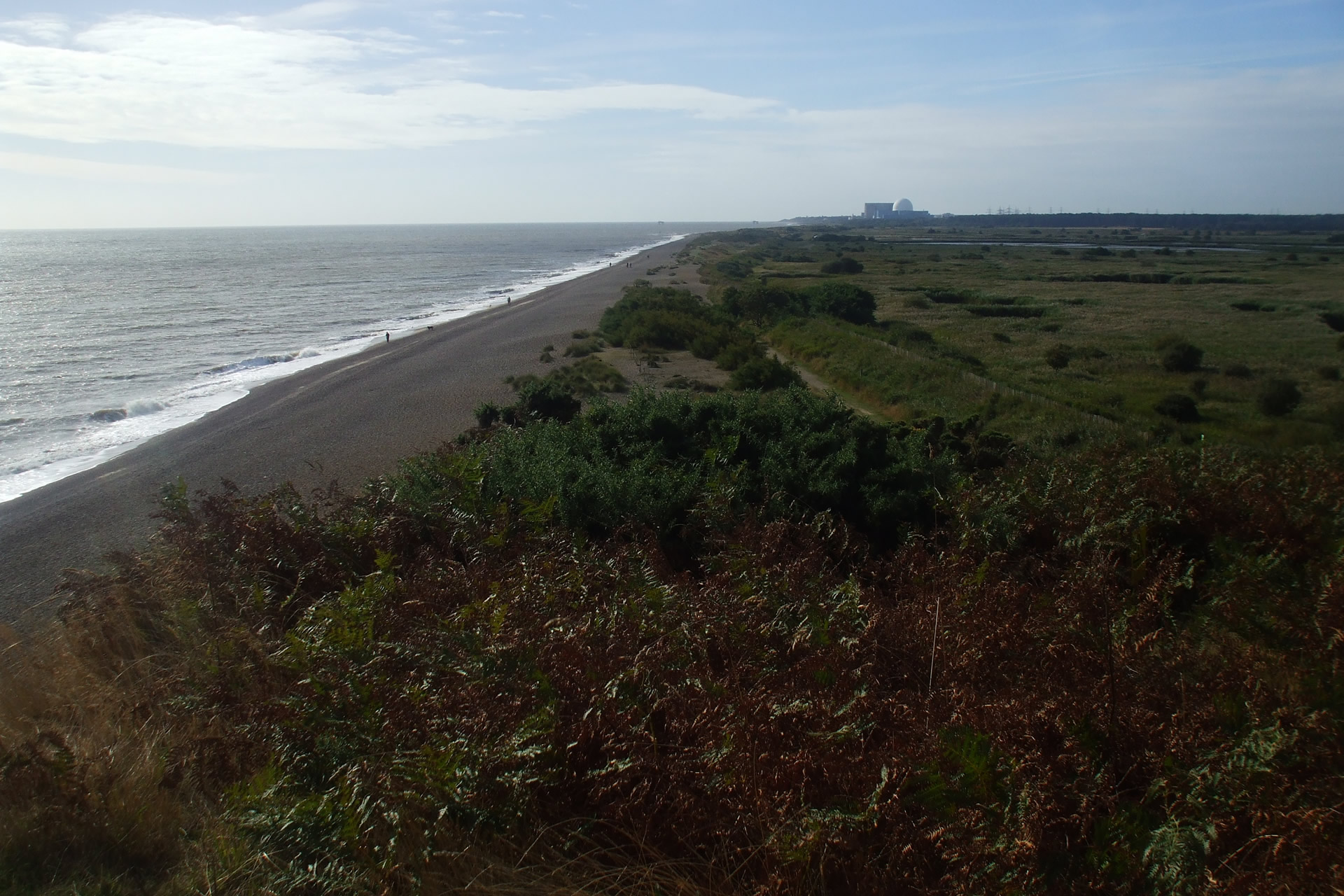Deltas sustain large human populations and economic activity as well as being the site of coastal wetlands. However, life on deltas is now seriously threatened by rising flood risk due to climate change and unsustainable development. Worldwide, coastal flooding cost $6 billion USD damage in 2005, and it is expected to grow 10 times by 2050 due to land subsidence and sea level rise (SLR). Meanwhile, increased anthropogenic activities have led to wide-spread decline of coastal ecosystems including mangrove, saltmarshes and coral reefs. To mitigate flood risks while conserving valuable coastal ecosystems, nature-based coastal defences are being developed.
This innovative approach (re)creates coastal ecosystems to attenuate waves, reduce storm surge impacts and stabilize shorelines. Compared to conventional approaches (e.g., building seawalls), nature-based solutions are self-sustaining and adaptable to environmental changes (e.g., SLR and storminess) via bio-geomorphological processes, and could therefore offer more robust and cost-effective protection. Nature-based solutions do however require space to be effective and to be resilient against natural hazards and climate change effects.
Nature-based coastal defence has great potential value for Chinese deltas, where large coastal populations are at high risk of flooding and wetlands have been lost at an alarming rate due to land-reclamation. Restoring lost ecosystems at the often wave-exposed locations can be extremely difficult, and this often leads to competition for space with land-reclamations. Given this intense land use and the past losses of ecosystems, the successful implementation of nature-based coastal defence in Chinese deltas will strongly depend on obtaining an in-depth understanding of two issues: (1) how wide the nature-based coastal defence zone should be, and (2) how to create the ecosystems where they are needed. As nature-based solutions have just started to be implemented in a limited number of countries (e.g., NL, UK and US), there are no practice-based rules available for direct applications in China.
In the ANCODE project we are focusing on the challenges faced by two coastal cities in China: Guangzhou and Shenzhen in the Pearl River Delta, which are ranked as first and ninth cities in the world in terms of annual losses due to flooding. By 2050, the annual flood loss of Guangzhou is expected to exceed US$13 billion, remaining the world’s most vulnerable coastal city. Chinese coastal engineers are already actively thinking of integrating coastal ecosystems into new dike designs. A 23 km-long pilot eco-dike ring will be implemented in the Nansha area in 2018–2022 and our project aims to interact with this development.
The UK team is led by Dr Judith Wolf of NOC in Liverpool. Co-investigators are Dr Svetlana Jevrejeva (also of NOC Liverpool) and Dr Ming Li of the University of Liverpool. Their work will span three years, starting in February 2018. NOC provides the physical science basis and projections for sea level, typhoons and waves in the South China Sea. NOC’s role recognises our strengths in sea level science, climate science and regional and coastal modelling. Dr Chen Wang at the Satellite Environment Centre in China, will lead work in the analysing remote sensing images showing the extent of mangroves in the PRD over the last 30 years. Dr Tjeerd Bouma (NIOZ) will lead a team focusing on wetland ecology including novel field experiments using a field wave-flume and Dr Zhan Hu (SYSU) and his team will address the local-scale ecosystem biogeomorphic dynamics.
The Challenge
The Pearl River Delta in the South China Sea is densely populated and fast-developing. Home to 67 Million people it is the most urbanised delta in the world. As it is very low-lying, cities here, like Guangzhou and Shenzhen, are among the most vulnerable to sea level rise in the world.
Project Approach
ANCODE aims to better understand the potential for re-introducing nature-based coastal defences, namely mangroves and oyster reefs, into such an environment. We aim to address the following questions:
Key Questions
- What is the recent history of loss of the natural mangrove forest?
- What conditions are required for re-establishment of mangroves?
- What will climate change bring in terms of changing temperature, salinity, sea level rise and storminess and can mangroves withstand the future climate?
- What will be the necessary area and time-scales of Windows of Opportunity (WoO) for reestablishment
- Can oyster reefs also help trap sediments and protect the newly established mangroves?
- How cost-effective will this approach be, in conjunction with hard sea defences, e.g., seawalls?
Using three distinct coastal types, which incorporate the range of conditions typically observed in temperate coasts, we aim to deliver improved scientific knowledge and enhanced modelling capability for dynamic coastal environments. The new knowledge and model capability developed will then be applied to deliver scenarios for two particularly challenging coastal locations.
Our work is divided into three Work Tasks: Note – images and text required for three work packages
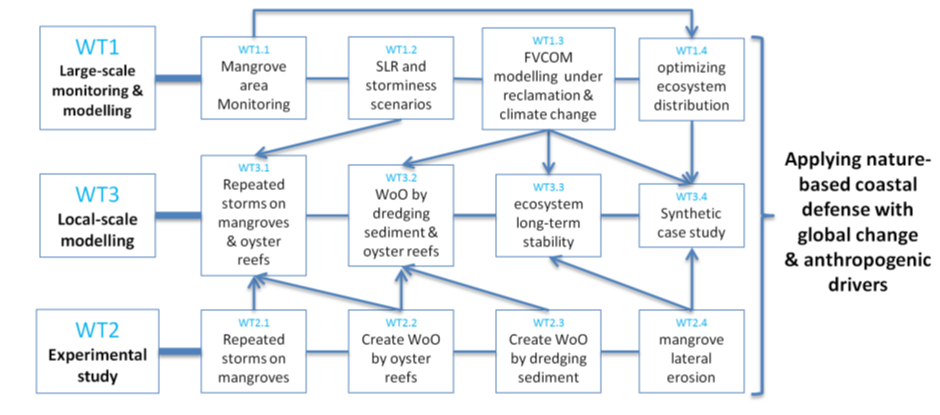
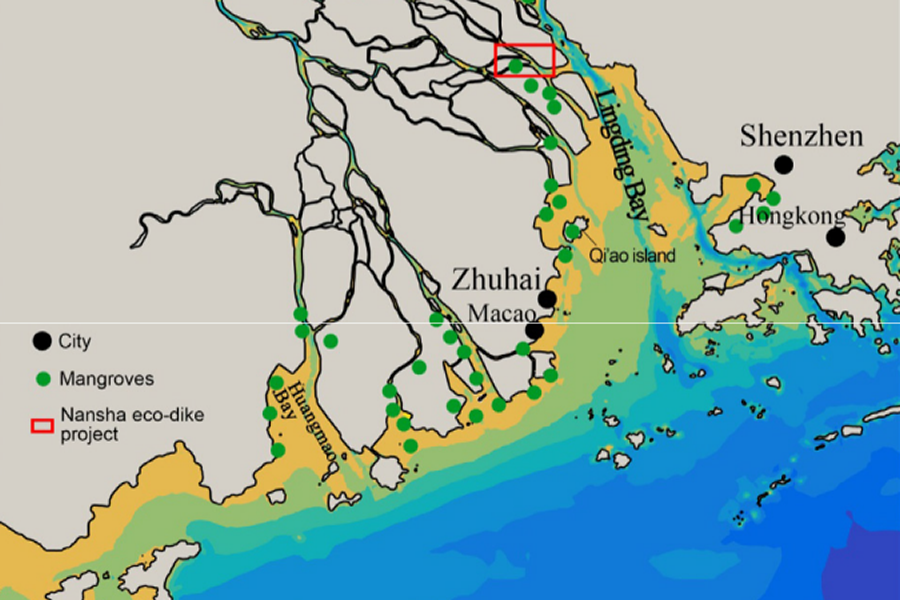
Work task 1
Large-scale monitoring and modelling.
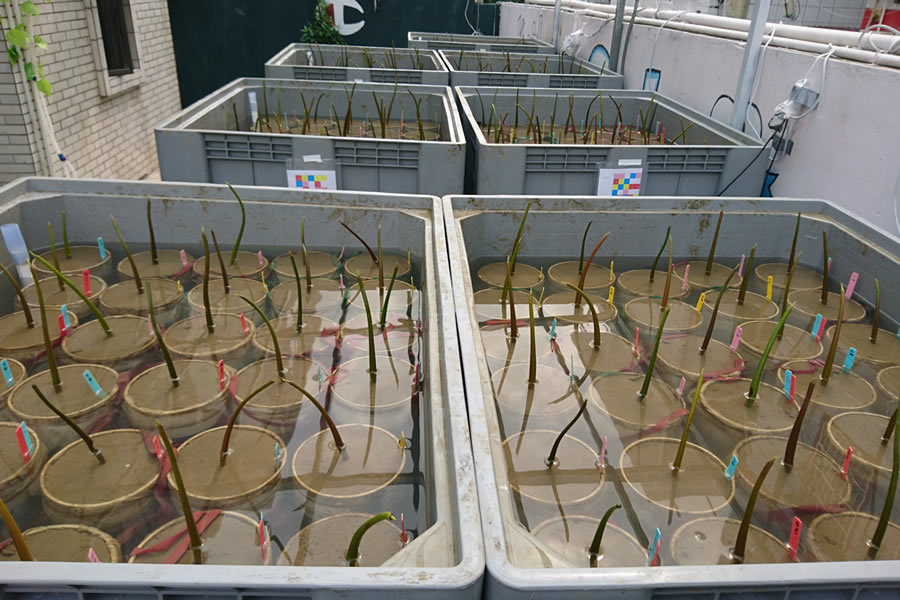
Work task 2
Work task 2 has the following objectives:
- Identify mangrove mechanical properties to allow for ecosystem size predictions under repeated storms
- Complete field and lab measurements to understand mangrove tree stability and forest size under erosional processes
- Identifying the physical requirement of mangrove seedlings for ecosystem restoration
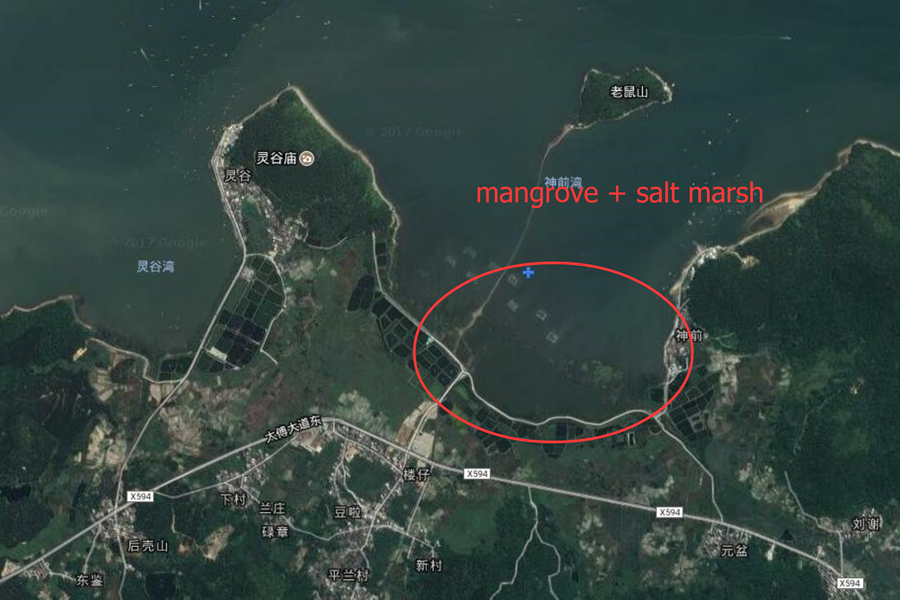
Work task 3
Local-scale modelling
Project partners






